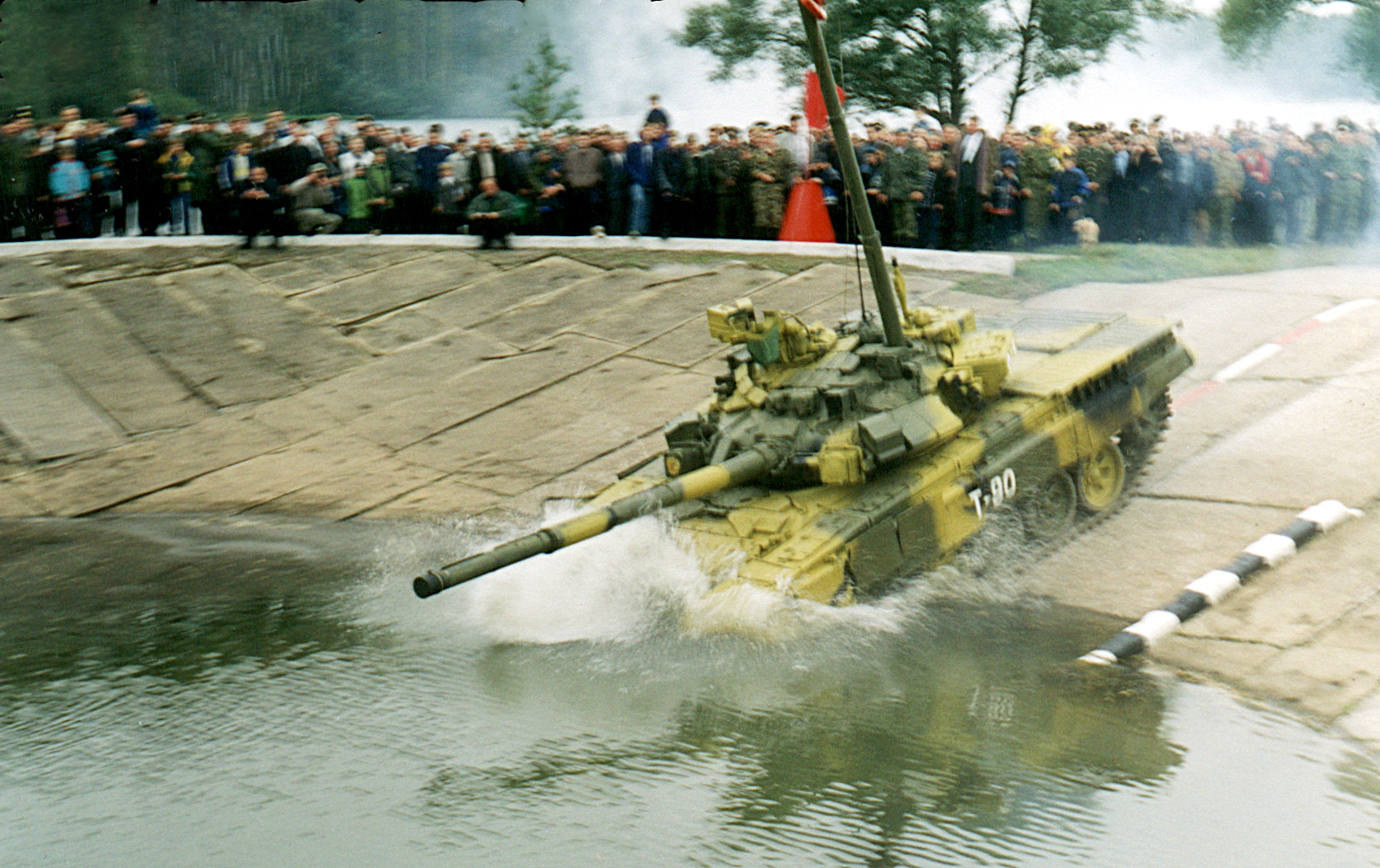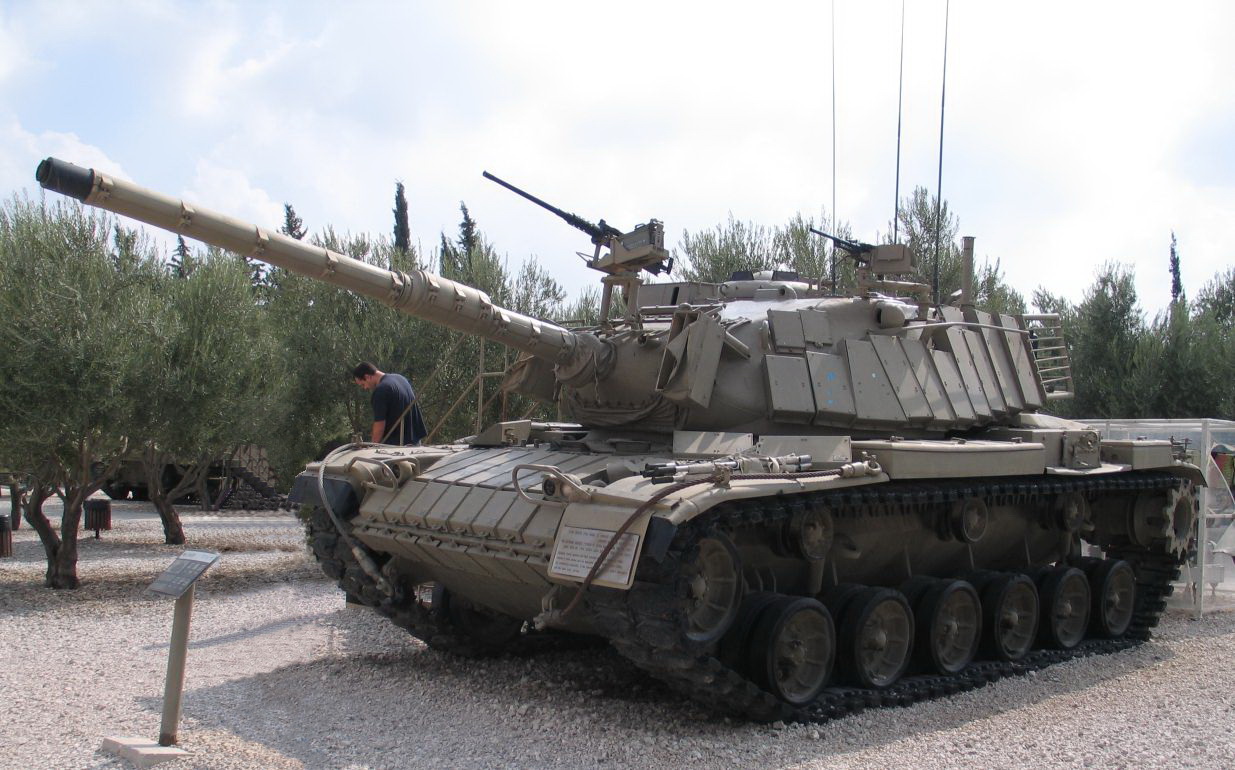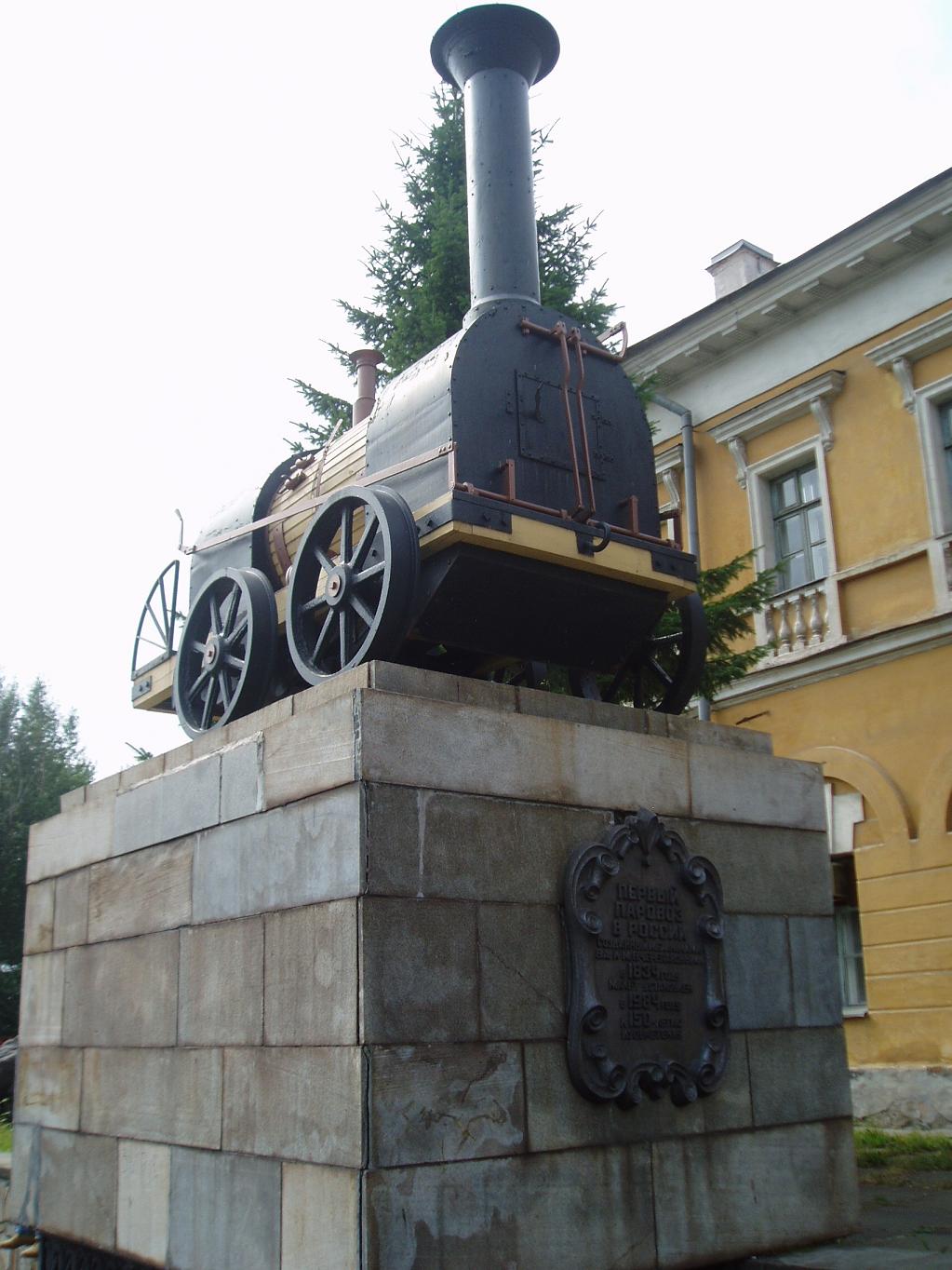|
T-90
The T-90 is a third-generation Russian main battle tank. It uses a 125mm 2A46 smoothbore main gun, the 1A45T fire-control system, an upgraded engine, and gunner's thermal sight. Standard protective measures include a blend of steel and composite armour, smoke grenade dischargers, Kontakt-5 explosive reactive armour (ERA) and the Shtora infrared anti-tank guided missile (ATGM) jamming system. The T-90 was designed and built by Uralvagonzavod, in Nizhny Tagil, Russia. It entered service with the Russian Army in 1992. Development The T-90 has its origins in a Soviet-era program aimed at developing a single replacement for the T-64, T-72 and T-80 series of main battle tanks. The T-72 platform was selected as the basis for the new generation of tank owing to its cost-effectiveness, simplicity and automotive qualities. The Kartsev-Venediktov Design Bureau from Nizhny Tagil was responsible for the design work and prepared two parallel proposals—the ''Object 188'', whic ... [...More Info...] [...Related Items...] OR: [Wikipedia] [Google] [Baidu] |
Kontakt-5
Kontakt-5 is a type of second-generation explosive reactive armour (ERA) originating in the Soviet Union. It is the first type of ERA that is able to significantly decrease the penetration of armour-piercing fin-stabilized discarding sabot (APFSDS) rounds. Description Introduced on the T-80U tank in 1985, Kontakt-5 is made up of "bricks" of explosive sandwiched between two metal plates. The plates are arranged in such a way as to move sideways rapidly when the explosive detonates. This will force an incoming kinetic energy penetrator or shaped charge jet to cut through more armour than the thickness of the plating itself, since "new" plating is constantly fed into the penetrating body. A kinetic energy penetrator will also be subjected to powerful sideways forces, which might be large enough to cut the rod into two or more pieces. This will significantly reduce the penetrating capabilities of the penetrator, since the penetrating force will be dissipated over a larger volume of a ... [...More Info...] [...Related Items...] OR: [Wikipedia] [Google] [Baidu] |
List Of Main Battle Tanks By Generation
Main battle tanks are often classified as belonging to a particular generation, although the actual definition and membership in these generations is not clearly defined. Soviet military planners organize tanks with the first generation of tanks up to 1945, and four generations of tanks (with the first main battle tank being the third-generation T-64), while Canadian strategists organize main battle tanks into three generations."The Canadian Directorate of Land Strategic Concept defines three generations of Main Battle Tanks. The first generation of post World War II Main Battle Tanks includes the U.S. M48/M60, the German Leopard 1 and the British Centurion and Chieftain. The second generation includes most of the 120 mm Main Battle Tanks such as the American M1A1, the German Leopard 2 and the British Challenger. As for the third generation Main Battle Tank, they include the latest 'digital' tank such as the French Leclerc and perhaps the American M1A2 and the German Leopard ... [...More Info...] [...Related Items...] OR: [Wikipedia] [Google] [Baidu] |
Shtora
Shtora-1 (russian: Штора, "curtain") is an electro-optical active protection system or suite for tanks, designed to disrupt the laser designator and laser rangefinders of incoming anti-tank guided missiles (ATGMs). The system is mounted on the Russian T-80 and T-90 series tanks and the Ukrainian T-84. The existence of ''Shtora'' was revealed in 1980 by Adolf Tolkachev.'' The Billion Dollar Spy: A True Story of Cold War Espionage and Betrayal'', David E. Hoffman, location 3142, Kindle edition. Description Shtora-1 is an electro-optical jammer that disrupts semiautomatic command to line of sight ( SACLOS) antitank guided missiles, laser rangefinders and target designators. Shtora-1 is a soft kill countermeasure system. The system was shown fitted to a Russian main battle tank during the International Defense Exposition, held in Abu Dhabi in 1995. The first known application of the system is the Russian T-90 main battle tank, which entered service in the Russian Army in 199 ... [...More Info...] [...Related Items...] OR: [Wikipedia] [Google] [Baidu] |
2A46 125 Mm Gun
The 2A46 (also called D-81TM) is a 125 mm/L48 smoothbore cannon of Soviet origin used in several main battle tanks. It was designed by OKB-9 (Artillery Plant No. 9) in Yekaterinburg. Description It was developed by the Spetstekhnika Design Bureau in Ekaterinburg in the 1960s originally for the T-64 tank. They were subsequently manufactured at Artillery Plant No. 9 in Ekaterinburg and Motovilikha in Perm. Other variations include 2A46M, 2A46M-1, 2A46M-2, 2A46M-4, 2A46M-5, and Ukrainian KBA-3 and Chinese ZPT-98. The 2A46 can fire armour-piercing fin-stabilised discarding sabot (APFSDS), high-explosive anti-tank (HEAT) and high-explosive fragmentation (HEF) projectiles. The ammunition for the 2A46 gun is in two pieces: the projectile is loaded first, followed by a separate propellant charge. The early versions of the 2A46 suffered from a relatively short barrel life, but this was rectified on the 2A46M-1 version. Depending on the version it offers or from the 2A46M-1 ... [...More Info...] [...Related Items...] OR: [Wikipedia] [Google] [Baidu] |
Russian Army
The Russian Ground Forces (russian: Сухопутные войска �ВSukhoputnyye voyska V}), also known as the Russian Army (, ), are the land forces of the Russian Armed Forces. The primary responsibilities of the Russian Ground Forces are the protection of the state borders, combat on land, and the defeat of enemy troops. The President of Russia is the Supreme Commander-in-Chief of the Armed Forces of the Russian Federation. The Commander-in-Chief of the Russian Ground Forces is the chief commanding authority of the Russian Ground Forces. He is appointed by the President of Russia. The Main Command of the Ground Forces is based in Moscow. Mission The primary responsibilities of the Russian Ground Forces are the protection of the state borders, combat on land, the security of occupied territories, and the defeat of enemy troops. The Ground Forces must be able to achieve these goals both in nuclear war and non-nuclear war, especially without the use of weapons of mas ... [...More Info...] [...Related Items...] OR: [Wikipedia] [Google] [Baidu] |
Uralvagonzavod
UralVagonZavod (russian: ОАО «Научно-производственная корпорация «УралВагонЗавод», , Open Joint Stock Company "Research and Production Corporation Uralvagonzavod") is a Russian machine-building company located in Nizhny Tagil, Russia. It is one of the largest scientific and industrial complexes in Russia and the largest main battle tank manufacturer in the world. The name ''Уралвагонзавод'' means ''Ural Railroad Car (wagon) Factory''. History The plant was built during 1931–1936 (mostly during the second Soviet five-year plan), launched on October 11, 1936, and named after Felix Dzerzhinsky. Initially it manufactured freight cars. After the German invasion of 1941, Joseph Stalin ordered hundreds of factories in Ukraine and western Russia to be evacuated east. The KhPZ Factory No. 183 in Kharkiv was moved to Nizhny Tagil by rail, and merged with the Dzerzhinsky Works, to form the Stalin Ural Tank Factory ... [...More Info...] [...Related Items...] OR: [Wikipedia] [Google] [Baidu] |
Heavy Vehicles Factory
The Heavy Vehicles Factory (HVF) located at Avadi in Chennai in the Indian state of Tamil Nadu is a armoured vehicle and battle tank manufacturing factory of Armoured Vehicles Nigam Limited. HVF was set up in 1961 by the Ordnance Factory Board, Government of India to manufacture heavy battlefield equipment, including Vijayantas, Kartik BLT, M-46 Catapult and T-72 Ajeya tanks and was later made part of Armoured Vehicles Nigam Limited in 2021 and part of the coporatisation of Ordnance Factory Board. Currently, HVF manufactures India's Arjun MBT, BLT T-72, T-72 for TRAWL and the T-90 Bhishmas. Apart from OE manufacturing HVF also has the facility of overhauling all the tanks manufactured at HVF.The Engine Factory of HVF functions separately from HVF. Solar plant The factory has a 16 mega watt (MW) solar power plant, spread over 80 acres of land, commissioned in 2018, which is the largest solar power plant in the city. It was installed by Bharat Electronics Limited Bharat ... [...More Info...] [...Related Items...] OR: [Wikipedia] [Google] [Baidu] |
2013 Moscow Victory Day Parade
The 2013 Moscow Victory Day Parade was a parade held in Red Square on 9 May 2013 to commemorate the 68th anniversary of the capitulation of the Third Reich in 1945. The annual parade marks the Allied victory in the Great Patriotic War on the same day as the signing of the German act of capitulation to the Allies in Berlin, at midnight of May 9, 1945 (Moscow time). The President of Russia, Vladimir Putin, delivered his tenth holiday address, and it was the first parade for both the Minister of Defense General of the Army Sergey Shoigu (parade inspector) and Russian Ground Forces commander Col. Gen. Vladimir Chirkin (parade commander), replacing Valery Gerasimov who has been promoted to Chief of the General Staff. The parade this year included the Suvorov Military School and the Nakhimov Naval School for the first time in four years, and the first appearance from a Cossack cadet corps unit, joining the more than 11,000 service personnel that marched on Red Square, and the return of t ... [...More Info...] [...Related Items...] OR: [Wikipedia] [Google] [Baidu] |
War Of Dagestan
The Dagestan War (russian: Дагестанская война), also known as the Invasion of Militants in Dagestan (russian: Вторжение боевиков в Дагестан) began when the Chechnya-based Islamic International Peacekeeping Brigade (IIPB), an Islamist group, led by Shamil Basayev, Ibn al-Khattab, Ramzan Akhmadov and Arbi Barayev, invaded the neighboring Russian republic of Dagestan, on 7 August 1999, in support of the Shura of Dagestan separatist rebels. The war ended with a major victory for the Russian Federation and Dagestan Republic, and the retreat of the IIPB. The invasion of Dagestan served as the main casus belli alongside the series of apartment bombings in September 1999 for the Second Chechen War. Background During the inter-war period of 1996 to 1999, a war-ravaged Chechnya descended into chaos and economic collapse. Aslan Maskhadov's government was unable to rebuild the region or to prevent a number of warlords from taking effective co ... [...More Info...] [...Related Items...] OR: [Wikipedia] [Google] [Baidu] |
Explosive Reactive Armour
Reactive armour is a type of vehicle armour that reacts in some way to the impact of a weapon to reduce the damage done to the vehicle being protected. It is most effective in protecting against shaped charges and specially hardened kinetic energy penetrators. The most common type is ''explosive reactive armour'' (ERA), but variants include ''self-limiting explosive reactive armour'' (SLERA), ''non-energetic reactive armour'' (NERA), '' non-explosive reactive armour'' (NxRA), and electric armour. NERA and NxRA modules can withstand multiple hits, unlike ERA and SLERA. A second hit in exactly the same location may potentially penetrate any of those, as the armour in that spot is compromised. Reactive armour is intended to counteract anti-tank munitions that work by piercing the armour and then either kill the crew inside, disable vital mechanical systems, or create spalling that disables the crew — or all three. Reactive armour can be defeated with multiple hits in the same pl ... [...More Info...] [...Related Items...] OR: [Wikipedia] [Google] [Baidu] |
2020 Nagorno-Karabakh War
The Second Nagorno-Karabakh War was an armed conflict in 2020 that took place in the disputed region of Nagorno-Karabakh and the surrounding territories. It was a major escalation of an unresolved conflict over the region, involving Azerbaijan, Armenia and the self-declared Armenian breakaway state of Artsakh. The war lasted for more than a month and resulted in Azerbaijani victory, with Armenia ceding the territories it had occupied in 1994 surrounding Nagorno-Karabakh. The defeat ignited anti-government protests in Armenia. Post-war skirmishes continued in the region, including substantial clashes in 2022. Fighting began on the morning of 27 September, with an Azerbaijani offensive along the line of contact established in the aftermath of the First Nagorno-Karabakh War (1988–1994). Clashes were particularly intense in the less mountainous districts of southern Nagorno-Karabakh. Turkey provided military support to Azerbaijan, although the extent of this support has be ... [...More Info...] [...Related Items...] OR: [Wikipedia] [Google] [Baidu] |
Nizhny Tagil
Nizhny Tagil ( rus, Нижний Тагил, p=ˈnʲiʐnʲɪj tɐˈgʲil) is a city in Sverdlovsk Oblast, Russia, located east of the boundary between Asia and Europe. Population: History The prehistory of Nizhny Tagil dates back to the mid-16th century, when the Stroganovs received the right to possess land by the Kama and Chusovaya basins. In 1579 they founded the first settlement, the Utkin sloboda, by the river Utka, the mouth of Chusoya. Fateyevo, the first Russian village in the Tagil region, was founded in 1665. In 1696, by the order of Tsar Peter the Great, the Vysokogorsky iron ore quarry was opened. Voevode Dmitry Protasyev was elected to search for iron and magnetic ores. The deposits were particularly rich, and included lodes of pure magnetic iron. The surrounding landscape provided everything needed for a successful and productive mining and smelting operation — rivers for transport, forests for fuel, and suitable climate. Several years later, the Tsar intr ... [...More Info...] [...Related Items...] OR: [Wikipedia] [Google] [Baidu] |






.jpg)


.png)
